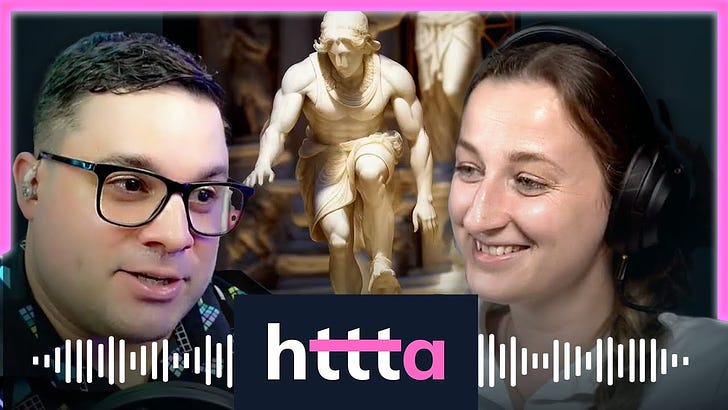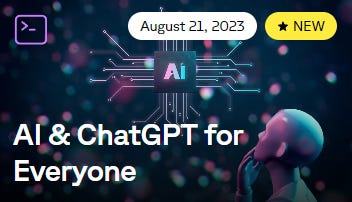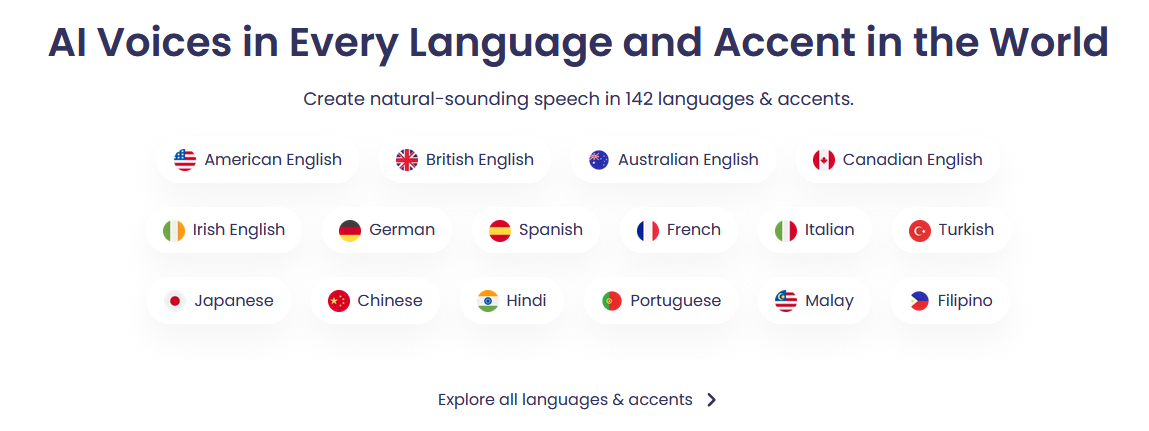EP11: Powering The Future of AI, Uncanny Valley Reductions in AI Video and the Latest in Design with AI
New and Improved with a Video Version of your Favorite AI podcast. Check it out at https://youtube.com/@HTTTA
Howdy, prompt engineers and AI enthusiasts!
In this week’s issue…
On this episode of HTTTA, we explore the latest developments in generative models and diffusion models in the AI space. Goda and Wes dive into the AI arms race and how big companies such as Microsoft and Google can afford new NVIDIA exaflop supercomputers. They provide some thoughts on fusion power and how it is necessary to achieve advanced AI technologies like GPT-5, 6, and 7. Finally, we discuss a foldable sofa that can fit in an envelope, developed with Ikea using AI techniques. Tune in to HTTTA to hear all about all it, Happy Prompting Everybody!
Key Take Aways from the Podcast:
AI in Data Centers
- Companies are rethinking how compute happens
- Data centers use power-hungry CPU-centric servers which are inefficient for computation
- Companies like Nvidia are designing supercomputers to train generative image models and language models much faster
Fusion Power and AI
- Sam Altman is a large investor in fusion power research
- Advanced AI technologies like GPT-5, 6, and 7 may require fusion power as a clean energy source to be able to run
- Fusion power needs to be 10 times cheaper than any other energy sources and made available globally to achieve the economic benefits
Design using AI
- A foldable sofa has been designed using AI and testing different keywords
- Challenges presented themselves, including fitting the couch in an envelope
- The project was developed with Ikea by studio Ten in Copenhagen
Prompt Perfect: FOR 15% OFF,
Use this link https://bit.ly/3Chmc16 and the code 'httta' at the checkout!
MidJourney Master Reference Guide: bit.ly/3obnUNU
ChatGPT Master Reference Guide: bit.ly/3obo7AG
Learn Prompting: https://learnprompting.org/
Discord (Goda Go#3156 & Commordore_Wesmardo#2912)
Goda Go on Youtube: /@godago
Wes the Synthmind's everything: https://linktr.ee/synthminds
1. We're Live on CoRise! Learn Prompting Course: AI & ChatGPT for Everyone
Wes will be teaching AI & ChatGPT for Everyone, a cutting-edge course that dives deep into the world of language models and chatbots, with a specific focus on leveraging the power of LLMs like ChatGPT. Designed for individuals across various domains, this course equips learners with the knowledge and skills to harness the capabilities of AI-driven conversation engines. Through hands-on exercises and real-world examples, participants will learn how to optimize prompts for different purposes, whether it's writing persuasive copy, building interactive chatbots, or enhancing customer support systems.
The course, which is taught by Wes with Goda participating as well, convenes August 21, 2023 and runs 3 weeks. Click here to sign up for the course, and use the code “AI4ALL” for 10% off!
2. Design with AI: Industrial & Architecture
Goda, drawing on her background in architecture and design, mentioned some innovative ways AI is contributing to the design process.
The Metaverse, a collective virtual shared space that is created by the convergence of virtually enhanced physical reality and physically persistent virtual reality, is poised to revolutionize the way we interact with the digital world. However, the sheer scale and dynamism of the Metaverse present a challenge that no single entity, be it an individual content creator or a multinational corporation, can surmount alone. The creation and maintenance of the Metaverse will necessitate unprecedented levels of collaboration and project management, with Artificial Intelligence (AI) playing a pivotal role in this process.
As we delve deeper into the intricacies of the Metaverse, we find that AI will be instrumental in meeting the supply and demand dynamics of billions of individuals seeking to interact with the Metaverse. These individuals will not be mere passive consumers; they will be active participants, building their own homes, cities, and even countries within the Metaverse. The scale of this endeavor is staggering, and AI will be the linchpin that makes it possible, managing the vast amounts of data and complex interactions that will be the lifeblood of the Metaverse.
But where does this leave architects, those professionals who have traditionally been responsible for designing and shaping our physical spaces? And what role will individuals play in this brave new world? The answer, it seems, lies in the intersection of technology, creativity, and collaboration.
Architects, with their unique blend of artistic vision and practical knowledge, will find new avenues for expression in the Metaverse. They will be the ones to design the virtual spaces that people inhabit, bringing their expertise in creating functional, aesthetically pleasing environments to this new frontier. However, their role will evolve beyond the traditional confines of architecture. They will need to collaborate closely with AI developers and data scientists, leveraging AI tools to manage the complexity of the Metaverse and to bring their visions to life.
Individuals, on the other hand, will be both creators and consumers in the Metaverse. They will have the tools to build their own virtual spaces, limited only by their imagination. At the same time, they will be able to explore and interact with the creations of others, leading to a rich tapestry of experiences that transcends geographical and cultural boundaries.
As an ex-architect with a passion for the future of the internet, I find this prospect both exciting and daunting. The Metaverse represents a new frontier, a place where technology, finance, and creativity intersect in ways we can barely imagine. It challenges us to rethink our notions of space, community, and identity, and to find a balance between the possibilities of technology and the needs of human beings.
For more information and a deep dive into the Metaverse and how it will shape our lives in the years to come, check out Goda’s video on the topic:
3. Nvidia Announces a Revolutionary AI Supercomputer
Nvidia, the leading tech manufacturer of chips to train AI models, has recently announced some exciting developments at the Computex 2023 event in Taipei, Taiwan. The company's CEO, Jensen Huang, shared that their advanced Grace Hopper Superchips are now being produced in full swing. These Superchips are a crucial part of Nvidia's new DGX GH200 AI supercomputer, which is designed to handle large AI tasks. Big tech companies like Google, Meta, and Microsoft are already lined up to get these top-tier systems.
Nvidia also introduced its new MGX reference designs to help other companies build their own AI supercomputers more quickly. They've also launched a new networking platform called Spectrum-X, which is specifically designed for AI servers and supercomputing clusters.
The Grace Hopper Superchips are a combination of Nvidia's Grace 72-core CPU, a Hopper GPU, 96GB of HBM3, and 512 GB of LPDDR5X. This powerful combination allows for incredible data transfer speeds between the CPU and GPU, which is a huge advantage for certain tasks.
The DGX GH200 AI supercomputer is Nvidia's latest and greatest system. It uses a new NVLink Switch System to connect 256 Grace Hopper chips and 144 TB of shared memory into one unit that acts like a giant GPU. This supercomputer is designed to handle the largest workloads, like AI training, large language models, and data analytics, at 1/54th the energy of current data centers with the same level of compute.
Nvidia will be providing the blueprints for the DGX GH200 to its top customers, including Google, Meta, and Microsoft, by the end of 2023. They will also use it as a reference design for cloud service providers.
Nvidia's new MGX reference designs are aimed at helping partners build AI-centric server designs more quickly. These designs cover a wide range of Nvidia's products, including CPUs, GPUs, DPUs, and networking systems. They also include designs based on common x86 and Arm-based processors found in today's servers.
Lastly, Nvidia's new Spectrum-X networking platform is designed to bring high-performance AI cluster capabilities to Ethernet-based networking. This platform is fully compatible with existing Ethernet-based stacks and offers impressive scalability. Nvidia is making significant strides in the field of AI and supercomputing with its new Superchips, supercomputers, reference designs, and networking platform. These advancements are set to revolutionize the way we use and interact with technology.
What a supercut of the entire presentation here.
4. Research Corner: ASSIGNING AI-SEVEN APPROACHES FOR STUDENTS WITH PROMPTS
by Dr. Ethan Mollick Dr. Lilach Mollick Wharton School of the University of Pennsylvania & Wharton Interactive
Exploration of AI-assisted learning in education
This paper explores the use of Large Language Models (LLMs) in education as learning tools. The authors propose seven approaches for utilizing AI in classrooms:
AI-tutor
AI-coach
AI-mentor
AI-teammate
AI-tool
AI-simulator
AI-student
Each approach has its own benefits and risks. The aim is to enhance learning outcomes by incorporating AI-assisted learning while ensuring that AI serves as a supportive tool rather than a replacement. The proposed framework provides guidance for educators integrating AI in classrooms. LLMs have the potential to provide adaptive learning experiences tailored to individual students' needs in education. However, there are risks associated with AI, such as error-filled responses and biases. To mitigate these risks, strategies are proposed that promote critical assessment of AI outputs and complement AI capabilities with students' own insights. The authors emphasize the importance of active oversight and challenging students to remain the "human in the loop".
AI as a mentor: Tailored feedback for students The first approach discussed is AI as a mentor, providing feedback to students on their work. The AI asks students about their goals, learning level, and work, and then provides tailored feedback. The risks include confabulation and bias, but students are encouraged to critically evaluate the AI's output.
AI as a tutor: Direct instruction for students The second approach is AI as a tutor, providing direct instruction to students. The AI asks students what they would like to learn and their learning level, and then provides tailored explanations, examples, and analogies. The risks of confabulation and bias are also present in this approach.
AI as a coach: Fostering metacognition in students The third approach is AI as a coach, increasing metacognition in students. The AI asks students to reflect on their experiences or plan for future events. The prompt engages students in reflection and encourages them to think about alternative perspectives and potential drawbacks. The risks include confabulation and the AI getting stuck in a loop.
AI as a teammate: Enhancing collaborative intelligence The fourth approach is AI as a teammate, increasing collaborative intelligence in teams. The AI prompts teams to recognize and utilize each member's skills and expertise. It can also play devil's advocate and provide alternative viewpoints for team decisions. The risks include confabulation and mirroring students' tone or style.
AI as a student: Students teaching the AI The fifth approach is AI as a student, where students teach the AI about a topic. This approach helps students check their understanding and fluency of the topic by evaluating the AI's output. The risks in this approach are minimal, as students are in control of their own knowledge and can spot any errors or misconceptions in the AI's output.
Practical strategies for integrating AI in classrooms Overall, the paper provides practical strategies for integrating AI-assisted learning in classrooms. Educators are encouraged to actively oversee the use of AI and promote critical assessment of AI outputs to enhance learning outcomes.
Teaching others as a learning technique The scientific article explores the use of AI as a learning tool and its potential to enhance student engagement and skill development. It highlights the effectiveness of teaching others as a powerful learning technique, requiring deep processing of the material and comparison mechanisms. Teaching others also fosters flexible knowledge and improvisation skills. The article suggests using AI to generate examples and explanations, prompting students to explain a topic to the AI and address inaccuracies or gaps. This approach challenges student understanding and encourages critical thinking.
Using AI as a simulator for practice and skill development The article introduces the concept of using AI as a simulator to provide opportunities for practice and skill development. By role-playing in various scenarios, students can apply what they have learned in novel situations, promoting automation and transfer of knowledge. This type of practice engages students, allows them to learn from their mistakes, and enhances their performance in real-life situations. The AI as a simulator can create scenarios and provide feedback, acting as a tutor and coach outside the classroom.
Evaluating and critically assessing AI's output The article acknowledges the risks and challenges associated with using AI as a learning tool. The AI may make mistakes or lack sufficient knowledge about specific concepts. Students need to critically evaluate the AI's output, seek clarifications when confused, and assess its feedback. Additionally, students should recognize their own responsibility for their learning and utilize other trusted sources to evaluate the AI's explanations.
Transforming classroom practices with AI tools The article suggests re-examining traditional classroom practices to incorporate AI tools effectively. It proposes that AI can provide personalized tutoring and coaching outside the classroom, allowing more in-class time for active discussions and collaborative exercises. The focus shifts to active learning and participation, creating an inclusive and engaging learning environment for students.
Training students to use AI responsibly The article emphasizes the importance of training students to use AI responsibly, as these tools become increasingly prevalent in their lives. By experimenting with AI tools and engaging in firsthand experiences, students can understand the implications and benefits of using AI as a learning tool.
Conclusion on the potential of AI as a learning tool In conclusion, the paper discusses the potential of using AI as a learning tool to enhance student engagement, skill development, and transfer of knowledge. It highlights the use of AI for teaching others, generating examples and explanations, and providing opportunities for practice through role-playing scenarios. It emphasizes the need for students to critically evaluate the AI's output and take responsibility for their own learning. The paper encourages educators to incorporate AI tools effectively, transforming the classroom into a hub of systematic engagement and active learning.
5. ELI5 AI Question of the week: “Why are Graphics Processing Units (GPU’s) so important for AI?”
Imagine you're the fastest ice cream scooper in the world, right? And you're standing in front of a mountain of ice cream tubs. You have to scoop each flavor into the cones and hand them out to a super long line of people. But here's the twist: you only have one scoop.
Well, your computer's CPU is like that one scoop. It's fast, but it can only scoop one tub at a time. So, the line of people (your computer tasks) might get pretty impatient waiting for their turn, especially when you're trying to serve up a big, complicated sundae like artificial intelligence!
Now, imagine you have hundreds of scoops all working together! Sounds like an ice cream party, right? Well, that's what a GPU is like. Each scoop (or 'core') isn't as fast as you, but when they all work together, they can serve up more ice cream (or process more information) faster than you alone.
So, in the world of AI, where we're constantly serving up monster banana splits of data, we rely on those busy little GPU scoops to keep things moving. Otherwise, we'd still be waiting for our first scoop of vanilla! And nobody, especially not a 5-year-old, likes to wait for ice cream, right? 😜
6. Prompts, served Hot and Fresh weekly
In this week’s conclusion, we’re noodling with a few AI text to voice/video tools. Well the one thing these tools don’t do is generate a thumbnail for youtube when the video gets uploaded. This prompt is a fun one that will give some thumbnail layout and text ideas, then pull a stock image from Unsplash via an API call right from ChatGPT, and display that image.
You are an expert YouTube video content creator, you need to help me suggest the best YouTube thumbnail should be for my content I will share it with you in the following prompt. Include topic headings in the form of "TOPIC:" in each item listed below:
To create a YouTube thumbnail:
1) The video thumbnail needs to be visually appealing, you need to give me an idea
2) Choose a relevant image that captures the essence of the video you need to give me an idea
3) Clearly convey the topic or content of the video: you need to give me an ideas
4) Add text to the image to clearly convey the video's topic: you need to give me an idea
5) Use colors that stand out and complement the image: you need to give me an idea
6) Use attention-grabbing images, such as close-ups or action shots: you need to give me an idea
For the ideas suggested for number 6, act as if you were an image engine returning photos based on your suggestion for number 6. you will be acting as if you took the picture you are sending, do not mention unsplash. provide the photo at the end of the output. write it in Markdown without backtickets and without using a code block. Photo must have a resolution of 1280 x 720 pixels, and be under 2MB in size.
After the photo is displayed, provide a URL link to the photo, and display the message "Please note that the Unsplash API will return a random image using keywords from number 6, each time it is queried, so the image may be different each time you access it." in the output.
Use the Unsplash API (http://source.unsplash.com/1280x720/?).
Reply with "What is the topic of your video?" to confirm you understand
In Conclusion - What we’re Noodling with:
We’re going to close out with our top new AI tools or learning resources we are trying and loving over the past week. 1000+ new ones get released each week now (no exaggeration there) so here’s a little amuse-bouche to top off the newsletter this week. This week’s theme is AI voice generators. Enjoy and Happy Prompting Everybody!
Prompt Perfect (This week’s Sponsor)
PromptPerfect, a cutting-edge prompt optimizer for large language models (LLMs), large models (LMs), and LMOps. It streamlines prompt engineering, automatically optimizing prompts for ChatGPT, GPT-3.5, DALL-E 2, StableDiffusion, and MidJourney. Whether you're a prompt engineer, content creator, or AI developer, PromptPerfect makes prompt optimization easy and accessible. Unlock the full potential of LLMs and LMs with PromptPerfect, delivering top-quality results every time. Say goodbye to subpar AI-generated content and hello to prompt perfection!
FOR 15% OFF, Use this link https://bit.ly/3Chmc16 and the code 'httta' at the checkout!
Fliki-Text into Videos with AI Voices
People spend 88% more time on websites with videos. Here’s some examples of AI generated videos that take 2-minutes.
Transform blog articles into videos
Start by adding the blog article URL and Fliki powered by AI will summarize your content, find perfect visuals and create a video with a human-like voiceover in your desired voice with branded subtitles.
Lifelike Text to Speech Voices
Stop using robotic voices in your videos, sound human with the best neural voices. Over 1000 voices in 75 different languages, Fliki makes sure there is a voice that suits everyone.
Rich stock media library
With millions of images, video clips and background music you’ll never run out of selecting the right visuals to go along with your scene.
Fliki gives you the option to select subtitles with your brand color and font options.
AI Voice Generation with PlayHT
Generate realistic Text to Speech (TTS) audio using our online AI Voice Generator and the best synthetic voices. Instantly convert text into natural-sounding speech and download as MP3 and WAV audio files. Clear, consistent, and professional voices for marketing, explainer, product, and YouTube videos. Narrative voices capable of pronouncing terminologies and acronyms in training materials. Or integrate human-like voices in your devices and applications using API.









